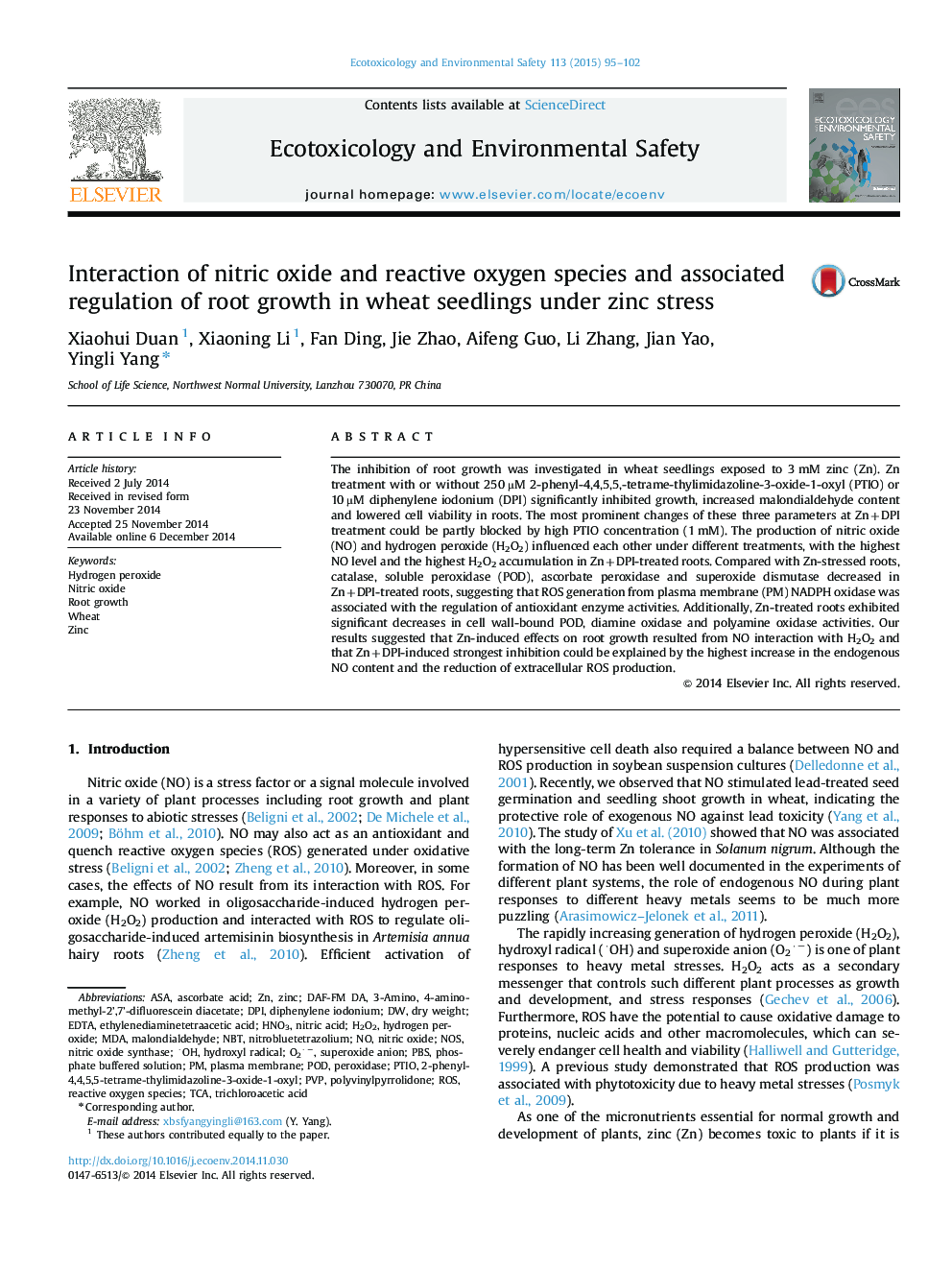| کد مقاله | کد نشریه | سال انتشار | مقاله انگلیسی | نسخه تمام متن |
|---|---|---|---|---|
| 4419668 | 1618950 | 2015 | 8 صفحه PDF | دانلود رایگان |
• Decreased cell viability was responsible for reduced root length due to Zn stress.
• Possible role of nitric oxide in root growth and abiotic stress in wheat.
• ROS generation from NADPH oxidase regulated antioxidant enzyme activities.
• Inhibition of NADPH oxidase resulting in growth inhibition of Zn+DPI-treated roots.
• Zn-treated root exhibited the inhibition of cell wall-bound POD, DAO and PAO.
The inhibition of root growth was investigated in wheat seedlings exposed to 3 mM zinc (Zn). Zn treatment with or without 250 µM 2-phenyl-4,4,5,5,-tetrame-thylimidazoline-3-oxide-1-oxyl (PTIO) or 10 µM diphenylene iodonium (DPI) significantly inhibited growth, increased malondialdehyde content and lowered cell viability in roots. The most prominent changes of these three parameters at Zn+DPI treatment could be partly blocked by high PTIO concentration (1 mM). The production of nitric oxide (NO) and hydrogen peroxide (H2O2) influenced each other under different treatments, with the highest NO level and the highest H2O2 accumulation in Zn+DPI-treated roots. Compared with Zn-stressed roots, catalase, soluble peroxidase (POD), ascorbate peroxidase and superoxide dismutase decreased in Zn+DPI-treated roots, suggesting that ROS generation from plasma membrane (PM) NADPH oxidase was associated with the regulation of antioxidant enzyme activities. Additionally, Zn-treated roots exhibited significant decreases in cell wall-bound POD, diamine oxidase and polyamine oxidase activities. Our results suggested that Zn-induced effects on root growth resulted from NO interaction with H2O2 and that Zn+DPI-induced strongest inhibition could be explained by the highest increase in the endogenous NO content and the reduction of extracellular ROS production.
Journal: Ecotoxicology and Environmental Safety - Volume 113, March 2015, Pages 95–102
